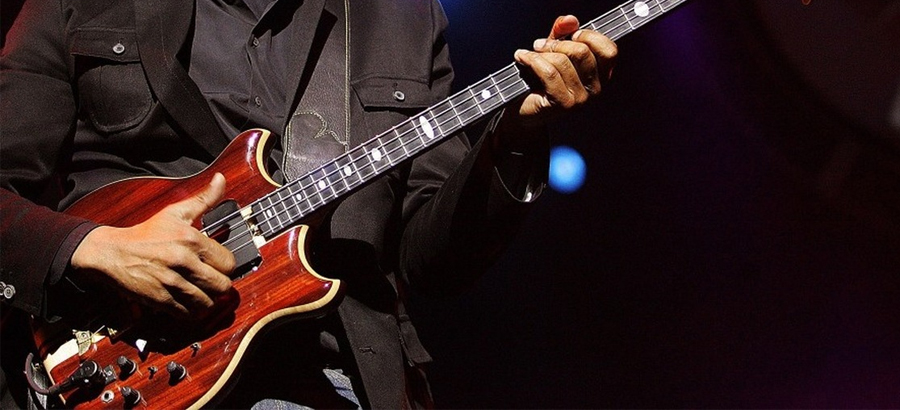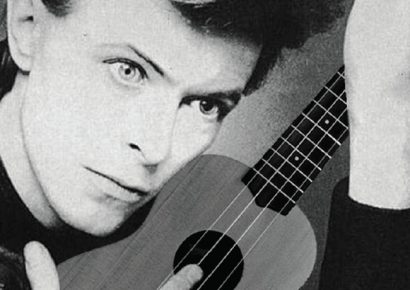
Figure A is a funkier line that fits over a G Major chord (or G7) and works nicely with a straight feel. One of the great things about bass is the ability to move a pattern or riff quickly. So Figure A works over G? And it starts on a G note, as it doesn’t use open strings? If C is the next chord in our progression, it’s then as simple as moving Figure A to start on a C note, which gives us Figure B.
So moving/transposing the same line from Figure A and Figure B up gives us Figure C. Obviously it’s great to learn the actual notes you’re playing, the relationship to the chord you’re playing over and then be able to play them anywhere (not just in shapes or patterns). But as mentioned earlier, that is also one great advantage of bass guitar in terms of positions and being able to move things easily – so why not embrace it?
Figure D is some quick transposing/shape moving practice. This time a 12-Bar Blues in B Major, which gives us B, E and F# as our I, IV and V chords. There is more than one spot to play this line, but let’s jump up the neck to start on B in the 7th fret on the E string. Then it’s just as easy as moving these shapes to each of the correct starting notes!
Chromatic notes can be a cool method of joining chords/lines together. Taking the first four bars of Figure D, we can keep the same bass line for the first three bars. Bar four is still on the B chord but is going to an E chord, so let’s chromatically move from B to E keeping a similar rhythm. Check out Figure E.
Figure F takes bars 5 – 9. Bar 5 on the E chord is the same as previously whilst Bar 6 stays on the A# for an extra quaver, meaning that the chromatic move up a semitone for the next bar starts us on B – the root note of the B Major chord (this time played up the octave for some variation). Bar 7 is unchanged, but Bar 8 uses a similar concept to the last bar of Figure E. This time we end on an E# (also known as F natural) to prepare us for the next bar which starts on F#.
The last four bars of our 12-Bar Blues progression can be seen in Figure G. Bar 9 is an F# Major chord, so we’ve taken an F# Major arpeggio and spread it over the same rhythm with the last two notes being F# and then F natural (a chromatic movement), which takes us to E on the first beat of Bar 10. We can play our line on E getting to B for Bar 11 and then the same last bar over the F# chord as Figure D.
There are tonnes of possible variations when you then consider changing rhythms, substituting chords and changing keys. Have a play through these examples slowly as a start and we’ll expand the idea of rhythms and substitutions next month!

